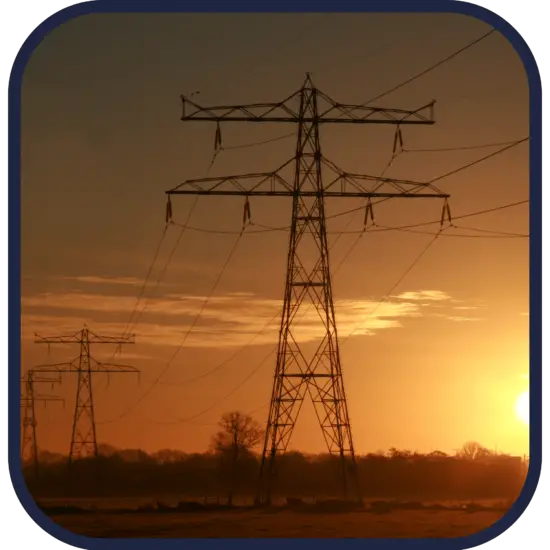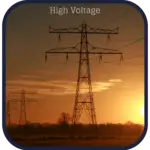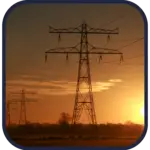30-second summary
Electric Power Transmission
Electric power transmission is the bulk movement of electrical energy from a generating site, such as a power plant, to an electrical substation.
Power stations produce usually electricity at high voltage (let’s say 25,000V). Electricity is sent through the national grid at 400,000V, 275,000V, or 132,000V. Step-up transformers at power stations produce the very high voltages needed to transmit electricity through the national grid’s power lines. But because high voltages are too dangerous for use in the home, step-down transformers are then used locally to reduce the voltage to safe levels. The American continent uses a low voltage of 110 to 120 volts (AC), while Europe, Asia, and Africa uses also low voltage but 220 to 240 volts (AC).
We must note that different voltages and different grid frequencies are used in the world.

High and extra-high voltages are associated with supply transmission from the power plant. The reason for transmitting power at high and extra-high voltage levels is to increase efficiency. The lower current accompanying the high voltage transmission allows for the use of thinner lighter-weight cables. This reduces the cost in the tower and electrical line construction. The United States transmits up to 500,000 volts on the high voltage grid.
The most common form of transporting electric power is three-phase systems. Three parallel conductors are cooperating to transfer energy with as small losses as possible. When using DC power for transport is only needed one conductor and losses in that conductor will also be less than for AC. Transmission lines mostly use high-voltage AC (alternating current), but an important class of transmission lines uses high voltage direct current. High-voltage direct current (HVDC) technology offers several advantages compared to alternating current transmission systems. For example, it allows more efficient bulk power transfer over long distances. As the HVDC transmission systems integrate into the electrical power system, it can be noticed improved reliability, stability and, not the least, the transmission capacity of the system. However, the cost is an important variable in the equation. The voltage level is changed with transformers, stepping up the voltage for transmission, then reducing voltage for local distribution and then use by customers.
Frequently asked questions
In the context of building wiring and the general use of an electrical apparatus, the International Electrotechnical Commission defines high voltage as more than 1,000 volts (V) of alternating current (AC) and above 1,500 V of direct current (DC).
Low voltage is an electrical voltage that is referred to in the consumer segment as the main voltage used for commercial electrical appliances and lighting in homes and industry. Electrical voltages that do not exceed the specified limit values are referred to as low voltage. According to the ANSI C84.1-2020: low voltage is between 240 to 600 V. According to the IEC: low voltage is the voltage between 50 – 1,000 volts of alternating current and between 120 – 1,500 V of direct current.
1.5V (DC) – A common open circuit voltage for non-rechargeable alkaline batteries (e.g. AAA, AA and C cells).
3.8V (DC) – Almost all smartphone batteries work at 3.8 volts. In order to make current flow from the charger to the battery, there must be a potential difference. Therefore battery chargers or USBs for almost all smartphones provide a voltage of 5V.
12V (DC) – A common voltage for automobile batteries is 12 volts (DC).
110 – 120V (AC) – The most common electrical outlet in any home. The American continent uses a voltage of 110 to 120 volts (AC) while Europe, Asia and Africa use 220 to 240 volts (AC).



